Considering a fluffy, blue-eyed companion to grace your home? The Ragdoll cat, with its captivating gaze and amiable nature, might be the perfect feline addition to your family. After spending three wonderful years with my Ragdoll duo, Teemo and Arya, I’m excited to share ten essential insights you should consider before welcoming a Ragdoll house cat into your life.
 cream bicolor ragdoll cat
cream bicolor ragdoll cat
Teemo and Arya, our Cream Bicolor Ragdoll house cats, epitomize the breed’s gentle and affectionate nature.
Understanding the Ragdoll Charm: Key Traits of Ragdoll House Cats
Ragdolls are more than just pretty faces; they possess a unique blend of traits that make them exceptional house cats. Let’s delve into what makes these felines so special:
1. The Original “Floppy Cat”
The name “Ragdoll” perfectly describes one of their most endearing characteristics: their tendency to go completely limp and relaxed when held. This “floppy” nature is a hallmark of the breed. Unlike some cats who resist being picked up, Ragdoll House Cats often melt into your arms, enjoying cuddles and being carried around like a plush doll. This docile behavior stems from their affectionate nature and love for human interaction. While most Ragdolls exhibit this delightful floppiness, it’s good to remember that individual personalities can vary.
2. Puppy-Dog Personalities in a Feline Form
If you adore dogs for their loyalty and affection, but prefer the independent nature of cats, a Ragdoll house cat could be your ideal match. They are renowned for their “puppy-like” personalities, exhibiting traits rarely seen in other cat breeds. Ragdolls are incredibly gentle, docile, and sweet-tempered. They form strong bonds with their families and crave companionship. Expect your Ragdoll to greet you at the door, follow you from room to room, and snuggle up beside you on the couch. Their affectionate nature makes them wonderful companions for children and they typically get along famously with other pets, creating a harmonious multi-pet household. Some Ragdolls even enjoy playing fetch, blurring the lines between feline and canine charm!
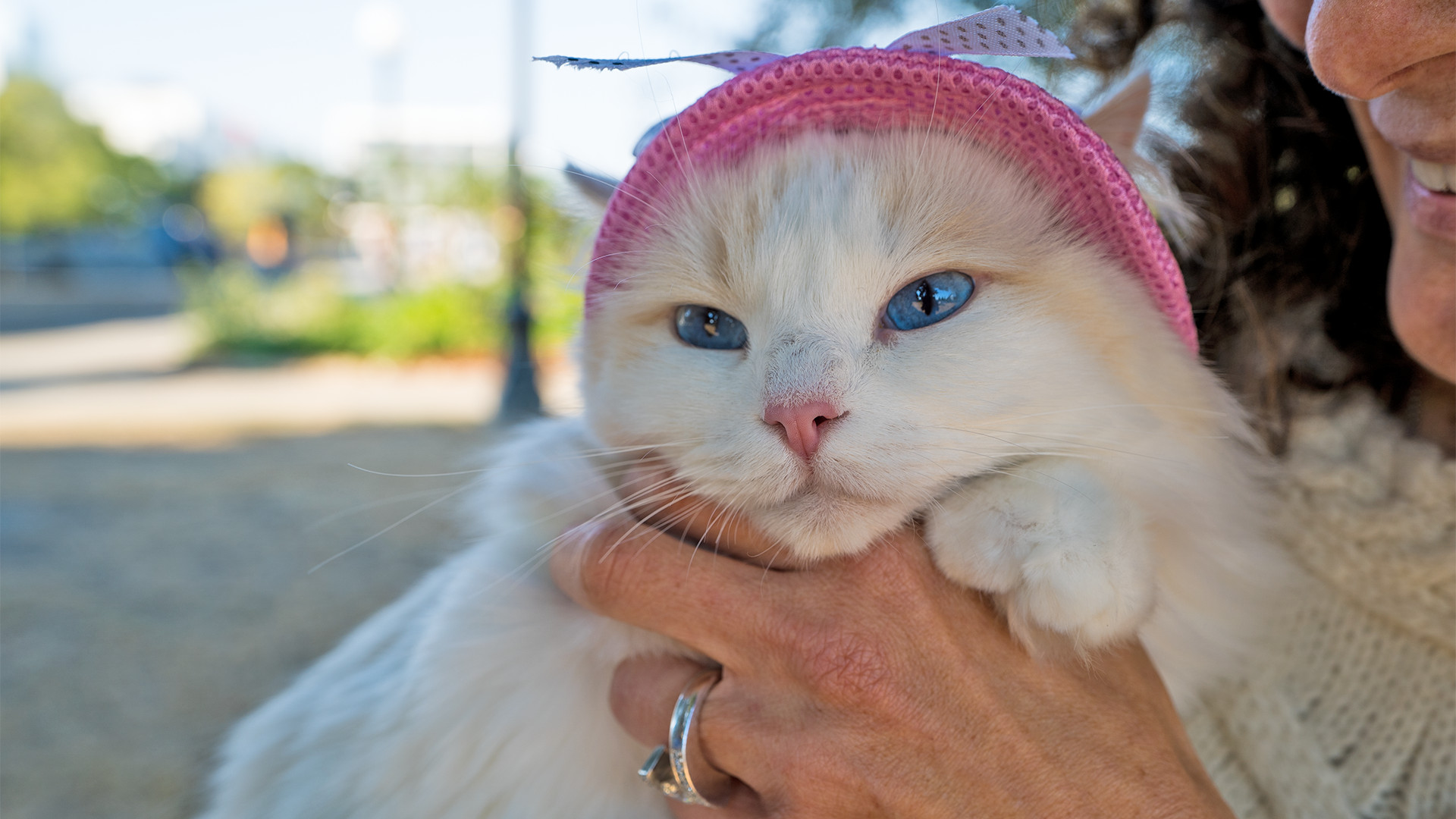 female cream bicolor ragdoll cat
female cream bicolor ragdoll cat
Olivia, a Cream Bicolor Ragdoll house cat and mother to my cats, showcases the breed’s elegant appearance and gentle demeanor.
3. Striking Appearance: Blue Eyes and Silky Coats
Ragdoll house cats are visually stunning. Their most striking feature is their captivating blue eyes, a breed standard for purebred Ragdolls. Their semi-long coats are another hallmark – plush, silky, and surprisingly low-maintenance compared to other long-haired breeds. Ragdolls come in four distinct patterns: bicolor, van, mitted, and colorpoint, each offering a unique aesthetic. These patterns are further enhanced by six beautiful colors: seal, blue, chocolate, lilac, red, and cream, providing a diverse palette of appearances. Interestingly, all Ragdoll kittens are born completely white, gradually developing their color and patterns by 8 to 12 weeks of age.
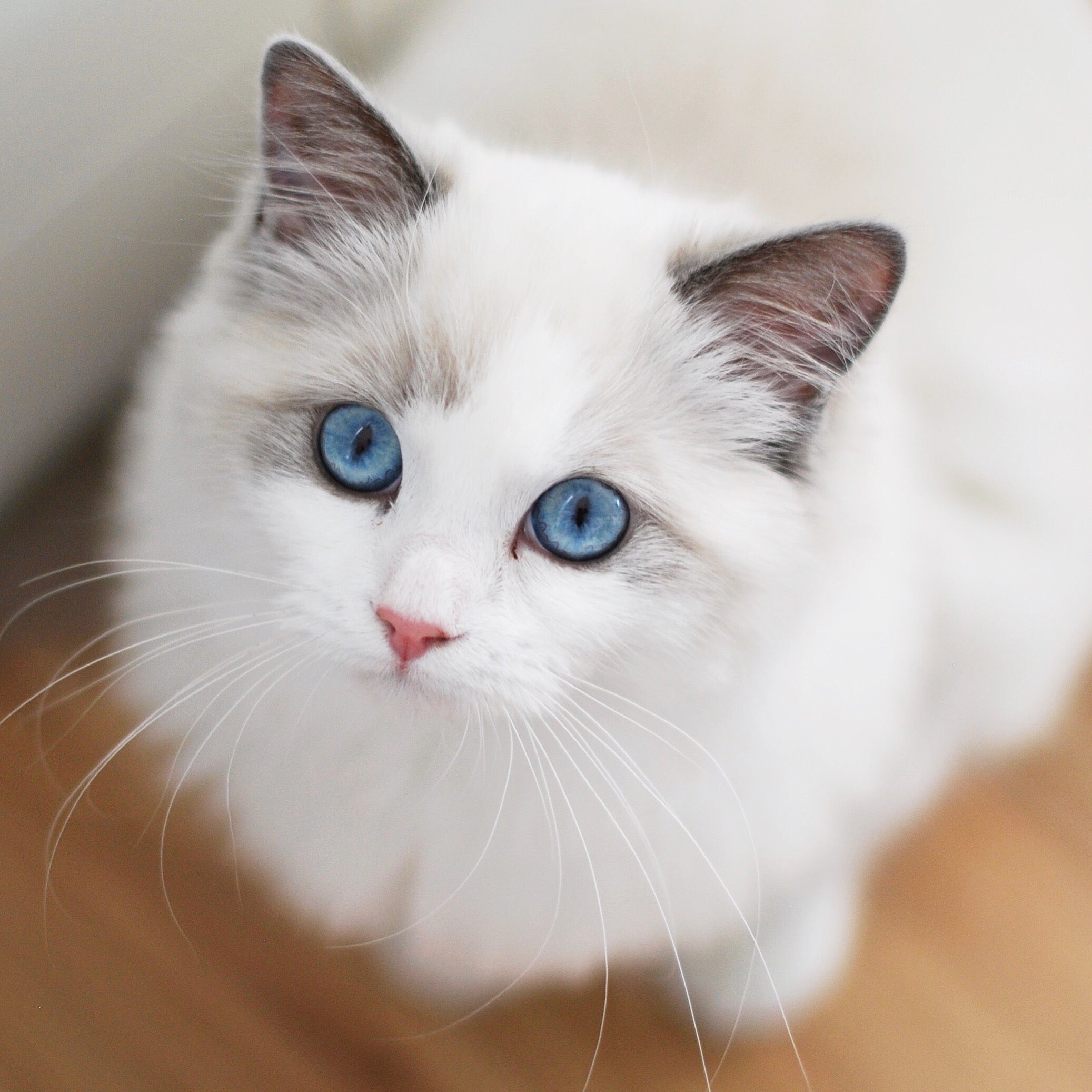 blue bicolor ragdoll
blue bicolor ragdoll
A Blue Bicolor Ragdoll house cat, highlighting the breed’s signature blue eyes and striking color patterns.
4. Long and Loving Lives Together
Prepare for a long-term commitment when you choose a Ragdoll house cat. Their lifespan is considerable, averaging between 15 to 20 years. With excellent care, some Ragdolls have even lived up to 25 years! To maximize your Ragdoll’s lifespan, focus on providing a high-quality diet, preferably incorporating raw meat, keeping them indoors to prevent accidents and diseases, and ensuring regular veterinary check-ups and preventative care. Ragdolls are a slow-maturing breed, reaching their full adult size and maturity around four years of age, meaning you’ll have years of kitten-like playfulness extending well into their adult lives.
5. Health Considerations: Understanding HCM
Like all breeds, Ragdoll house cats have potential health predispositions. Hypertrophic cardiomyopathy (HCM) is the most common cardiac disease in cats and is a concern in Ragdolls. HCM involves the thickening of the heart walls, reducing heart efficiency and potentially leading to sudden cardiac death. In Ragdolls, HCM is often inherited due to specific genetic mutations. Reputable Ragdoll breeders understand this risk and screen their cats for the HCM mutation. They typically guarantee that kittens are HCM negative, significantly reducing the likelihood of your Ragdoll developing this condition. Choosing a kitten from a responsible breeder who prioritizes genetic testing is crucial for ensuring your Ragdoll’s long-term health.
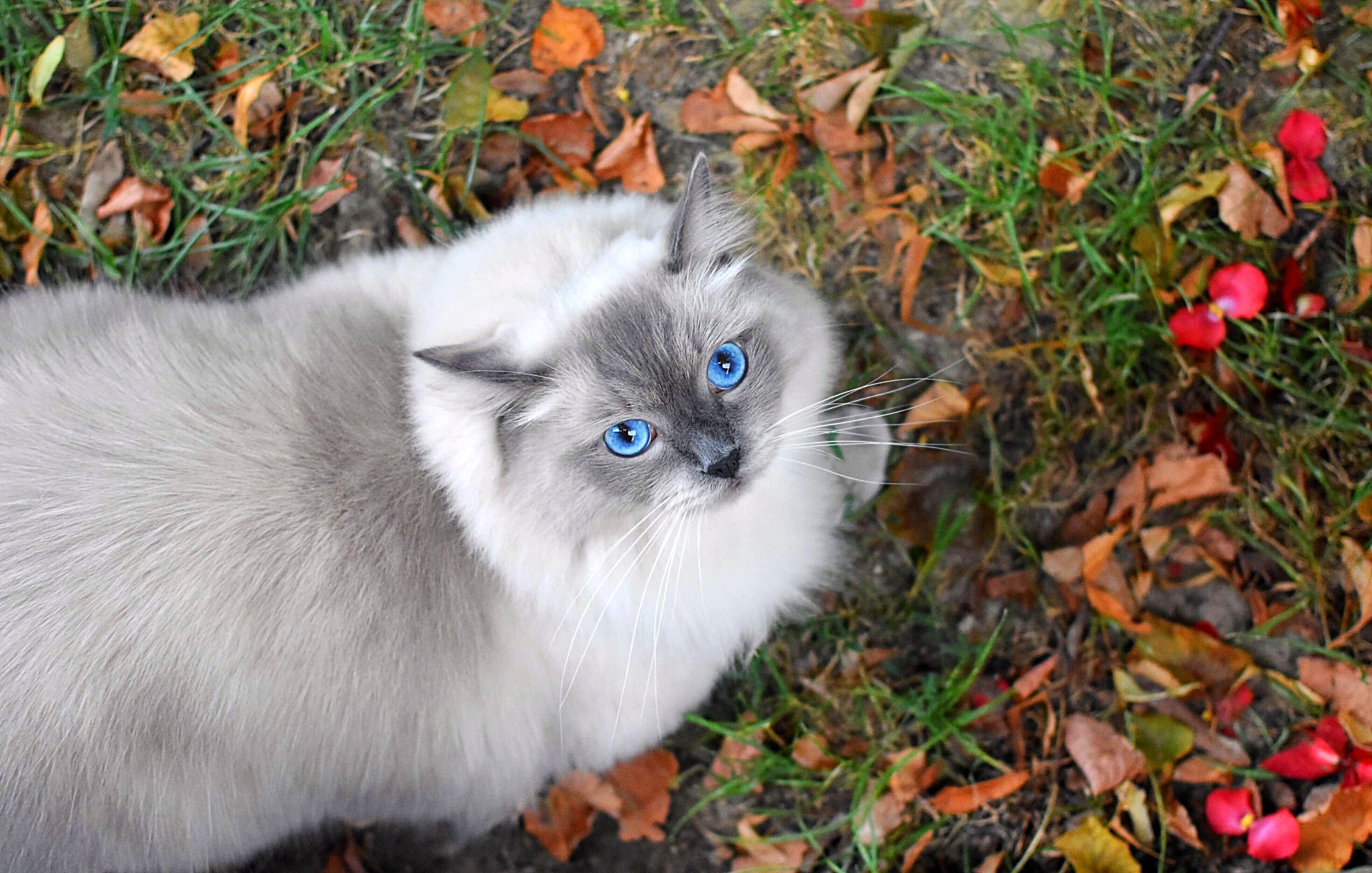 Blue Mitted Ragdoll
Blue Mitted Ragdoll
A Blue Mitted Ragdoll house cat, showcasing another popular pattern variation within the breed.
6. Companionship Cravers: They Dislike Being Alone
Ragdoll house cats thrive on companionship and are not well-suited to being left alone for extended periods. They are significantly more social and attention-seeking than many other cat breeds. If you are frequently away from home, consider getting a companion animal for your Ragdoll. Another cat, or even a cat-friendly dog, can provide the social interaction and play your Ragdoll needs to prevent loneliness and potential behavioral issues. A lonely Ragdoll might exhibit destructive behaviors like scratching furniture or excessive vocalization. Providing a stimulating environment with toys and scratching posts can also help keep them entertained in your absence. My decision to adopt Teemo and Arya from the same litter was the best choice for them – they are constant companions, playing, cuddling, and keeping each other entertained.
7. Gentle Giants: Big in Size, Bigger in Heart
Ragdoll house cats are undeniably large. Male Ragdolls can weigh up to 20 pounds, while females typically range from 8 to 15 pounds. Despite their size, they are not known for aggression or a strong hunting drive. In fact, their gentle nature makes them less capable of defending themselves outdoors. It’s safest to keep Ragdolls as indoor cats, especially when unsupervised, to protect them from outdoor dangers. Their substantial size contributes to their cuddly nature, making them perfect “teddy bear” cats for snuggling. When handling a Ragdoll, be sure to support their weight properly with both hands. Their larger size also means they require larger litter boxes and beds to comfortably accommodate them. Creating a spacious and comfortable environment is essential for these gentle giants, consider a cozy cat cave like the one pictured below.
8. Shedding Considerations: Manageable Grooming
As a long-haired breed, Ragdoll house cats do shed. The amount of shedding can fluctuate with temperature, season, and diet. They typically develop a thicker coat in winter, which they shed in the spring. Regular grooming is essential to manage shedding, prevent mats and tangles, and keep their coats healthy. Fortunately, most Ragdolls enjoy being brushed, making grooming a pleasant bonding experience for you and your cat. Daily brushing is recommended to minimize shedding and maintain their beautiful coats.
9. Not Hypoallergenic: Allergy Awareness
Contrary to some misconceptions, Ragdoll house cats are not hypoallergenic. While they lack a thick undercoat, which can sometimes reduce dander (a common allergen), the primary cat allergen is a protein found in cat saliva. Cats spread saliva on their fur during grooming, and this saliva-coated hair is then shed around the home. If you or someone in your household has cat allergies, it’s important to be aware that Ragdolls can still trigger allergic reactions. Spending time with a Ragdoll before bringing one home can help assess potential allergy concerns.
10. The Cost of Quality: Investment in a Ragdoll
Purebred Ragdoll house cats are not inexpensive. In the United States, kittens from reputable breeders registered with organizations like TICA (The International Cat Association) can range from $1,500 to $3,500 or even higher, depending on factors like coat pattern, color, and “quality” (pet vs. show quality). “Show quality” Ragdolls, bred to closely match the breed standard for cat shows, typically cost more than “pet quality” cats, which may have minor cosmetic variations. The classic bicolor pattern is also often associated with a higher price. It’s crucial to recognize that responsible and ethical Ragdoll breeding involves significant costs and time. Be wary of kittens priced significantly lower, as this could indicate unethical breeding practices or health concerns. Choosing a reputable breeder is an investment in the health and well-being of your Ragdoll house cat.
Harvey and Olivia, Cream Ragdoll house cats, brother and mother, relaxing in a Coco Cat Bed, emphasizing the breed’s relaxed and domestic nature.
Is a Ragdoll House Cat Right for You?
Ragdoll house cats are exceptional companions, known for their gentle nature, striking beauty, and affectionate personalities. They are ideal for families, individuals, and multi-pet households seeking a loving and interactive feline friend. However, they require attention, companionship, and a financial commitment to ensure their health and well-being. By understanding these ten key aspects, you can make an informed decision about whether a Ragdoll house cat is the perfect addition to your home and lifestyle.


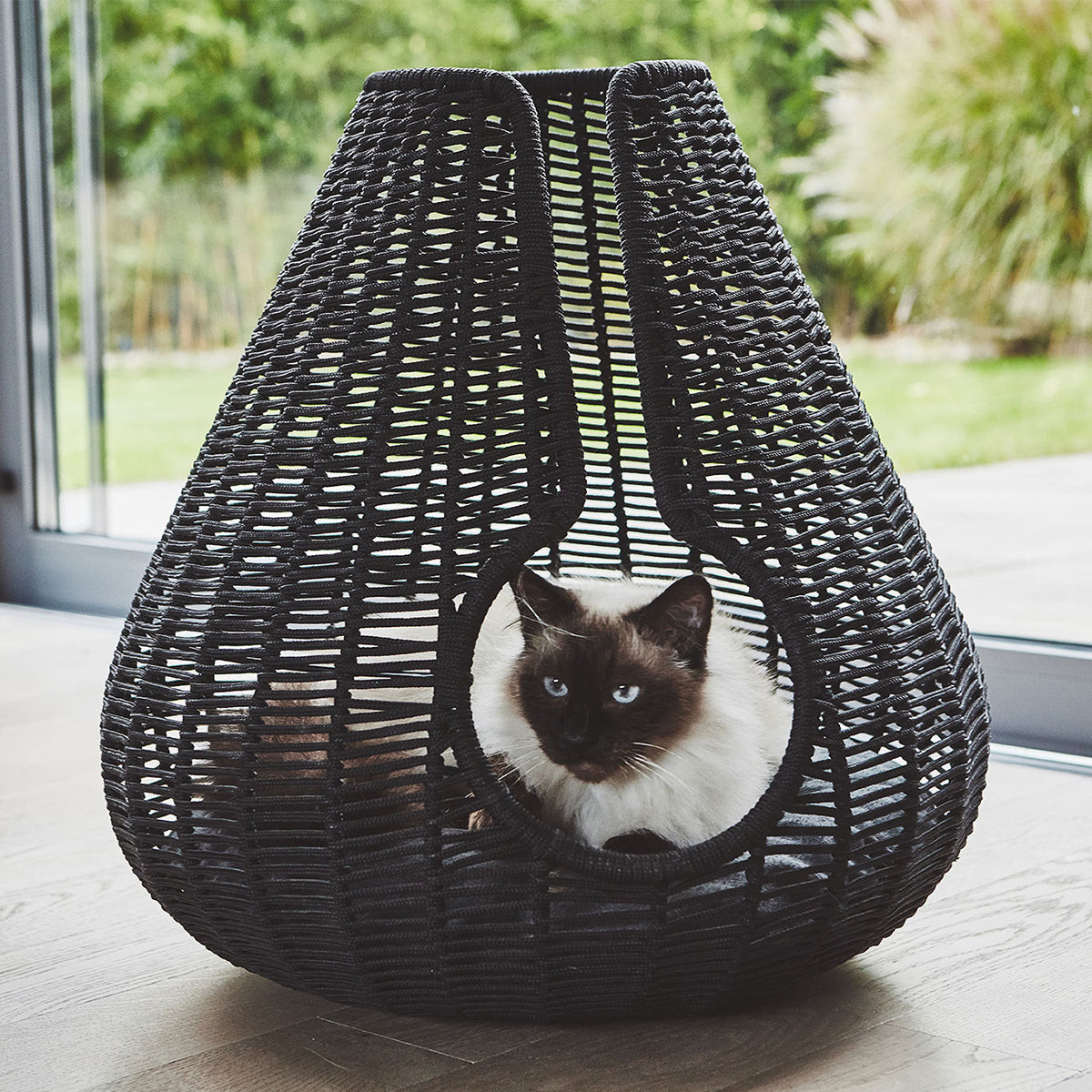 cat cave
cat cave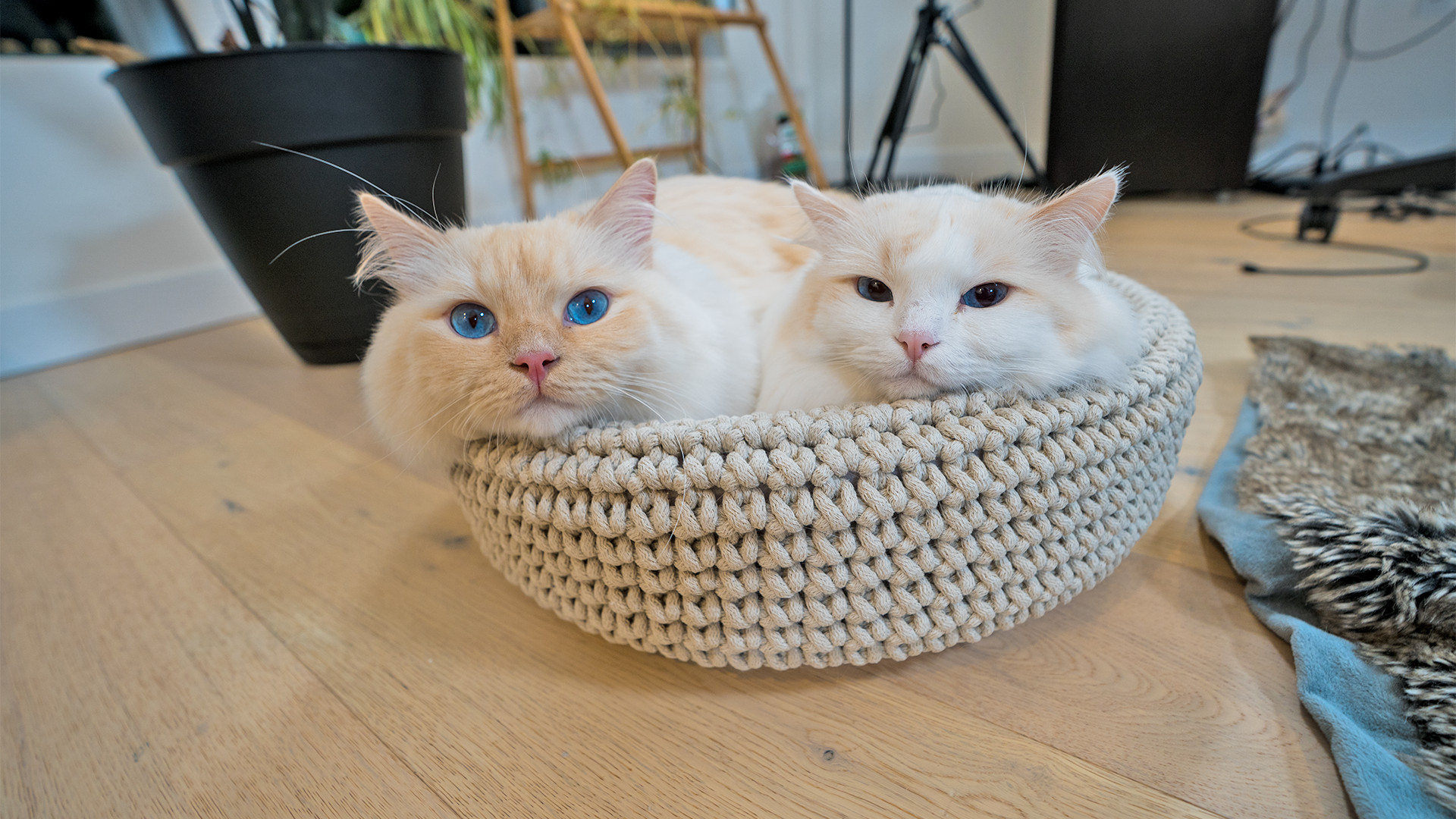 cream ragdoll cats
cream ragdoll cats